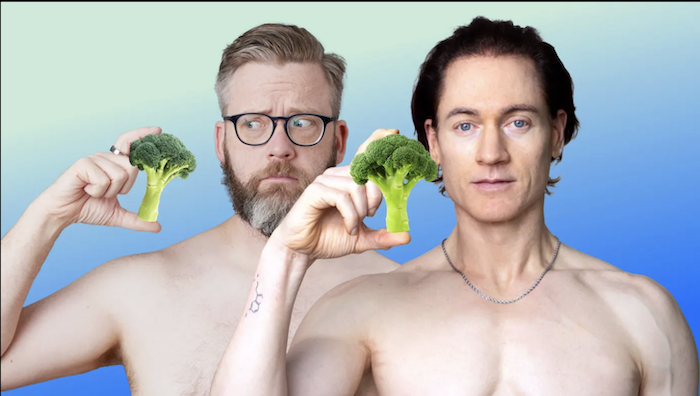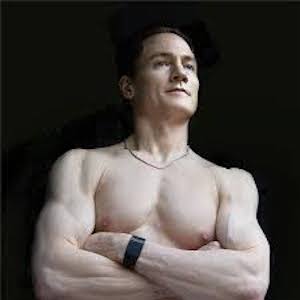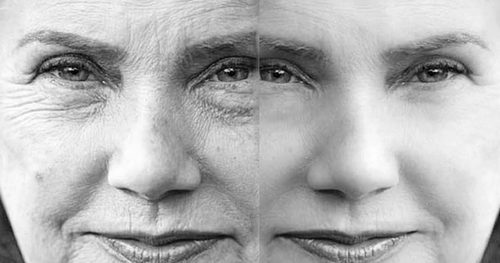The Blueprint Protocol Can Help You Age Better

The Blueprint protocol was designed by Bryan Johnson and his medical doctors to slow down or reverse aging. It’s extreme, but not novel. You can get most of the benefits with far less effort. I will show you three people who did. (Read and watch)
The “Blueprint protocol” is the much-hyped method to slow down, or even reverse biological age. Yes, it seems to be working, and yes it’s extreme — you would need the discipline of a saint and about $2 million dollars a year to duplicate it.
But the Blueprint protocol demonstrates two valuable things:
- Aging is plastic, and
- You can influence how you age.
In this post, I’m going to tell you how you use a less-extreme version of the Blueprint protocol to improve your healthspan, at minimum. Bryan Johnson sets the stage; and Julia Clark Gibson, Nick Tucker and Robert Chapman-Smith have outsized performances.
Let’s begin with multi-millionaire tech mogul Bryan Johnson. He’s made a big splash in the longevity community. Anyone who spends more than $2 million a year on
exercise, food, supplements, tests and doctors with the aim of becoming biologically younger is going to get attention.
He certainly has captured mine.
I’ve written two posts about Bryan Johnson and his “Blueprint” anti-aging protocol. I reviewed the makeup of his Blueprint protocol for youthful longevity, but suggest easier to do and much, much cheaper alternatives that can go a long way to helping you extend your healthspan — your healthy years — if not your lifespan itself.
The Bryan Johnson Blueprint to Reduce Bioage is my first post about the man. In it, I summarized what his protocol is all about and how he does it. That was followed up by Six Simple Tips for Longevity, where, under the subheading “$2 million vs $1,296,” I introduce a woman named Julia Clark Gibson, who is aging slower than Bryan Johnson. She spends $1,296 per year on her protocol (including gym membership) versus Johnson’s $2 million.
How does she do it?
By focusing on the essentials that matter most:
- Exercise,
- A plant-based diet,
- Time-restricted eating,
- Stress abatement, and
- Restorative sleep.
Which brings me to this third post about Bryan Johnson and his Blueprint. In this case, I want to show you how two guys who adopted much of Johnson’s Blueprint protocol for just one month achieved substantial improvements in various important biometrics, as well as lowering their biological age. I’m referring to the FreeThink filmmakers Nick Tucker and Robert Chapman-Smith, who make short videos of interesting stories that “reach millions of young, motivated change-makers every month, shining a light on the frontier of ideas and innovation” [source].
Well, I’m not particularly young, but I am motivated to share with you what happened to these guys after one month on the Blueprint. And the reason is plasticity.
In the context of biological aging, “plasticity” refers to the capacity of an organism, like us, to adapt and change in response to internal and external factors, despite the cumulative effects of aging. It involves the ability of our biological systems to undergo modifications and adjustments at various levels, including cellular, molecular, and physiological, in order to cope with changing conditions or stressors.
Plasticity is crucial in understanding aging because it represents the resilience or flexibility of biological systems to maintain function and homeostasis in the face of aging-related changes or environmental influences. It implies that aging is not a fixed, irreversible process but rather a dynamic and modifiable one.
What does that have to do with Bryan Johnson, Julia Clark Gibson, Nick Tucker and Robert Chapman-Smith?
Here’s the connection between the four, their routines and plasticity:
- Bryan Johnson is demonstrating what is possible by optimizing every possible angle of lifestyle factors that can be employed to slow down and even reverse biological aging, thus showing that aging can be affected by specific inputs, and therefore is plastic.
- Julia Clark Gibson’s experience mirrors Johnson’s by demonstrating how effective the Pareto Principle (the 80/20 rule) can be as applied to biological aging, wherein she does a fraction of Johnson’s Blueprint and yet achieves outsized gains; again, showing the plasticity of aging.
- Nick Tucker and Robert Chapman-Smith show how quickly plasticity begins in a meaningful way — after just one month on a partial Johnson Blueprint protocol, they get healthier and younger (see the video below).
So, at this point you have some sense that four individuals are making some headway in reducing their biological age and quality of life by either explicitly following the Blueprint protocol (Bryan Johnson, Nick Tucker, Robert Chapman-Smith) or implicitly (Julia Clark Gibson). What follows is some more background about Johnson’s Blueprint protocol, and the video that Tucker and Chapman-Smith made to showcase what happened to them during a one-month trial doing the Blueprint.
Reversing Aging: Can It Be Done?
Bryan Johnson is not only imagining being able to reverse the clock on aging and regain your youth — he’s doing it. The man is spending $2 million a year on extensive research and collaboration with 30 doctors, which has produced his Blueprint protocol, a comprehensive plan that focuses on diet, exercise, sleep, supplements and a whole lot more.
The Complexity of Aging
According to Johnson, our understanding of aging has become increasingly complicated as we learn more about the human body. Unlike the traditional concept of a single numerical age, Johnson argues what has already been well-established in the scientific community — that our bodies age at different rates and in various ways. For example, our skin may age differently than our organs, and our brain may age at a different rate than our immune system. To address this complexity, Johnson’s Blueprint plan takes a holistic approach, considering the optimal health of each individual organ and system in the body.
Complexity begets complexity, and his Blueprint is definitely complex!
The Blueprint Protocol
Johnson’s Blueprint protocol involves a combination of lifestyle factors, which are meticulously selected based on scientific research and evidence. The plan focuses on measuring and optimizing various biomarkers in the body to slow down the aging process.
The key components of the Blueprint protocol are:
- Exercise,
- Diet (time restricted eating),
- Supplements, and
- Sleep.
Exercise: Johnson engages in intense, full-body workouts every morning, which include various activities such as high-frequency electromagnetic stimulation. This form of exercise aims to build muscle strength and stimulate the body’s natural regenerative processes.
Diet: Johnson follows a strict schedule where he consumes all his meals before 11 AM, fasting for the remaining 18 hours of the day. His meals consist of nutrient-dense foods, including green juices, vegetables paired with dark chocolate, and a nutty pudding made of macadamia nuts, walnuts, and berries. This diet is intended to provide the body with essential nutrients and promote healthy aging.
Supplements: Johnson takes over a hundred different supplements daily, carefully selected based on scientific literature and research. These supplements are designed to target specific aspects of aging and support overall health and longevity.
Sleep: Johnson is fanatical about getting to be between 8:30 and 9:00 PM and arising at 4:30 AM.
(Check out the video below for more details, and/or my post about his Blueprint protocol.)
Bryan Johnson’s Quest for Youth
Johnson’s personal journey with Blueprint has yielded promising results. He claims that his protocol has slowed down his speed of aging, and that his overall biological age is 31 years versus his chronological age of 46. Through regular evaluation and adherence to the plan, Johnson has achieved 50 ideal biomarkers (blood sugar, cholesterol, etc.), indicating a significantly healthier aging process. His methods are extreme and meant to be, because he is trying to present his experience as a “proof of concept” that controlling aging is possible, because it’s plastic.
The Potential Impact
Johnson emphasizes that the potential of controlling aging is revolutionary, surpassing our current comprehension. Clearly, his approach is not accessible or practical for everyone (got $2 million to spend annually?), but as demonstrated by many people (myself included), the Blueprint protocol can be adapted to fit a person’s lifestyle and circumstances. By simplifying healthy choices and making them habitual, we can improve our overall well-being, slow down the aging process, and in some cases, become biologically younger.
Watch the entertaining video that showcases Nick Tucker and Robert Chapman-Smith’s one month experiment with the Blueprint protocol. It’s only about 29 minutes long, but if you’re short on time, I summarized the video below.
The Bryan Johnson Blueprint Protocol: A 30-Day Experiment in Health and Wellness
The video documents Nick Tucker and Robert Chapman-Smith’s 30-day experience following the Bryan Johnson Blueprint protocol, which focuses on nutrition, exercise, supplementation and sleep to optimize health and potentially slow the aging process. The focus is on the challenges, changes, and outcomes of the experiment.
The Plan
- Tucker and Chapman-Smith expect to see a weight loss of around two to eight pounds per month, given their focus on exercise and nutrition. The plan includes taking numerous supplements costing over $1,000 for a month’s supply.
- The diet consists of specific meals like the Green Giant, Super Veggie, and Nutty Pudding, with room for one additional daily meal under 500 calories.
- Exercise involves one hour of daily activity, including high-intensity training and weightlifting.
Living on the Blueprint Plan
- The participants find the protocol to be mostly boring due to repetitive meal choices and restrictions on caffeine, alcohol, and processed foods. Despite the boredom, the plan is not unpleasant.
- They experience changes in body odor and glowing skin as side effects of the supplements. Eating out and socializing become challenging due to dietary restrictions. Initially, they question the efficacy of a one-month timeframe for significant health and biological age improvements.
Personal Experiences and Observations
- Tucker and Chapman-Smith document their weight loss progress throughout the experiment. The diet is filling, and the author occasionally struggles to eat a third meal due to feeling full. Changes to the diet recipes are made to alleviate boredom without deviating from the plan.
- They note improvements in weight, body composition, and overall fitness; however, no endorphin rush associated with exercise is experienced.
- Despite some challenges, the author finds that energy levels, weight loss, and overall well-being have improved over the 30 days.
Evaluation of the Blueprint Plan
- Tucker and Chapman-Smith reflect on their decision to continue elements of the Blueprint protocol in their daily life subsequent to the one-month trial. The plan is not viewed as miserable, but rather as a basic and sound approach to wellness.
- They emphasize the importance of considering health every day and making choices to improve well-being.
- Data from tests (including DEXA scans, VO2 max tests, blood tests, and biological age tests) highlight positive outcomes from the Blueprint protocol. In just one month:
- Tucker’s visceral fat (fat around the organs, the worst place for it to be) was reduced by 21%,
- His triglycerides went from 300 mg/dL to just over 70,
- LDL went from 126 mg/dL to 92, and
- His biological age was reduced from 36 to 33.
Your Takeaway
Bryan Johnson’s Blueprint protocol is not particularly novel. Over the past 13 years, I’ve been writing about how exercise, diet, stress reduction, sleep and other lifestyle factors can influence healthspan — and all that was based on published science.
What is new is the degree of complexity and monitoring that Bryan Johson has done with his anti-aging journey. He has established a high bar — one very few of us could or would be willing to leap over. But the good news, as demonstrated by Julia Clark Gibson, Nick Tucker and Robert Chapman-Smith, is that you can do more with less.
In just 30 days, you can improve your health in various measurable ways by tweaking your exercise, nutrition, sleep and resilience to stress, resulting in weight loss, improved body composition, increased fitness, and a reduced biological age.
Want some guidance?
Put on your reading glasses and read:
- For exercise: The Anti-aging Workout Domains for A Strong, Long Life
- For diet: The Blue Zone Diet Will Transform You
- For supplements: See my supplements category
- For sleep: 7 Sleeping Tips For Your Ultimate Rest and Restoration
- For stress: Chronic Stress and Inflammation: The Damage and What To Do About It
That will get you started.
Last Updated on March 2, 2024 by Joe Garma





